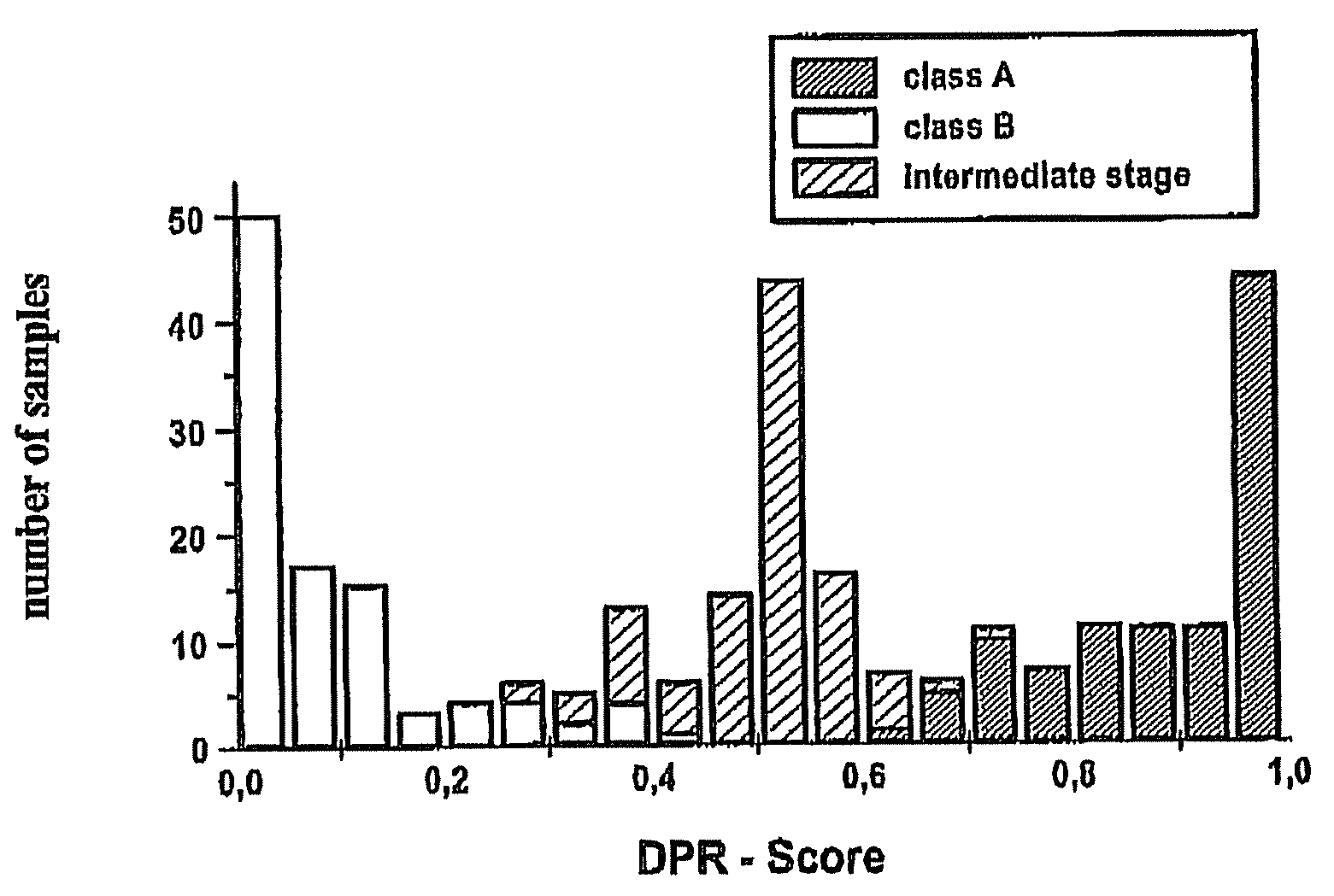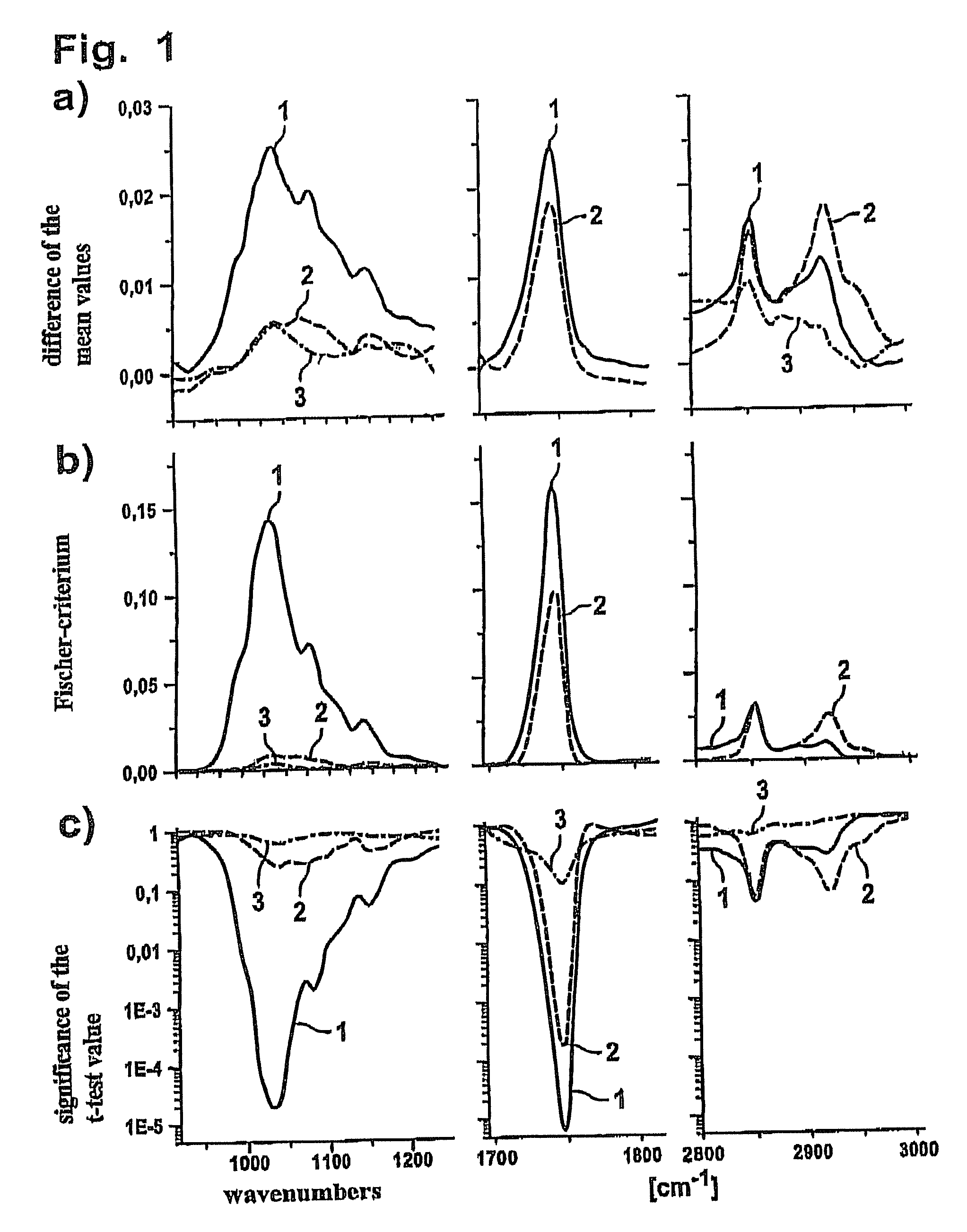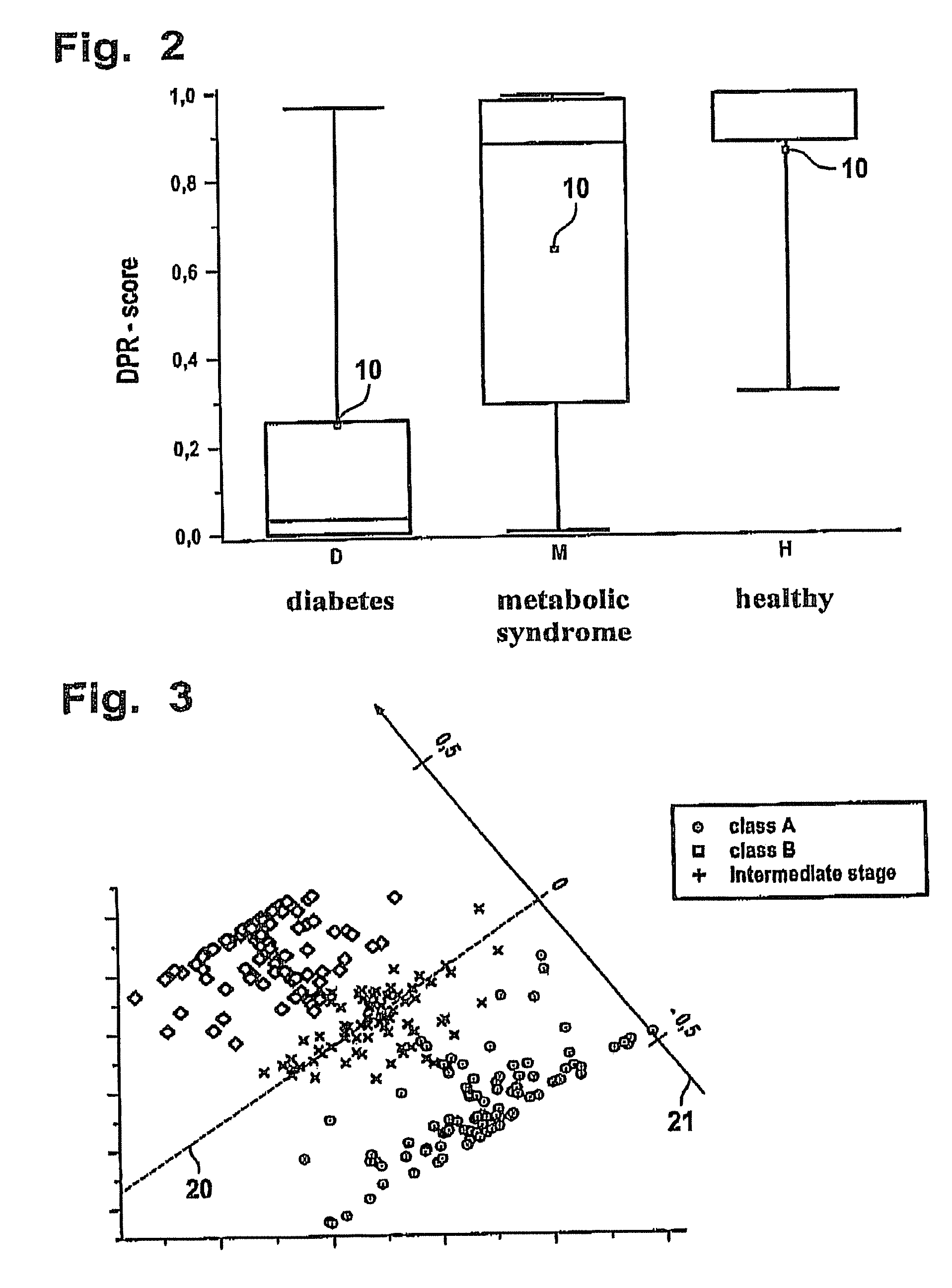Quantification of disease progression by means of interpolation between parameters based on electromagnetic spectra
a technology of interpolation and measurement parameters, applied in the field of analytical methods, can solve the problems of disease diagnosis, difficult diagnosis of individual diseases, and inability to allocate unknown samples whose measured parameters are in the intersection range of the two data records, so as to simplify the generation of interpolation data records, accurately image and track
- Summary
- Abstract
- Description
- Claims
- Application Information
AI Technical Summary
Benefits of technology
Problems solved by technology
Method used
Image
Examples
Embodiment Construction
[0059]FIG. 1 shows various analyses of spectral data generated in performing measurements on samples of a healthy person, a patient with metabolic syndrome and a diabetic. The corresponding samples and the classes in this regard are referred to below for the sake of simplicity as healthy, metabolic syndrome and diabetes.
[0060]FIGS. 1a through 1c each show characteristic wavenumber ranges between 900 cm−1 and 1,200, 1,700 to 1,800 cm−1 and 2,800 to 3,000 cm−1. Curve 1 in FIG. 1 shows the difference between the data from a healthy person and a diabetic, while curve 2 shows the difference between data from a healthy subject and a patient with metabolic syndrome. Curve 3 illustrates the differences in spectra that are obtained between the data from two healthy subjects generated by random differences.
[0061]FIG. 1a shows the particular curve in the aforementioned wavenumber ranges, each derived from the difference in the mean values of the data points. To be able to obtain a better diffe...
PUM
 Login to View More
Login to View More Abstract
Description
Claims
Application Information
 Login to View More
Login to View More - R&D
- Intellectual Property
- Life Sciences
- Materials
- Tech Scout
- Unparalleled Data Quality
- Higher Quality Content
- 60% Fewer Hallucinations
Browse by: Latest US Patents, China's latest patents, Technical Efficacy Thesaurus, Application Domain, Technology Topic, Popular Technical Reports.
© 2025 PatSnap. All rights reserved.Legal|Privacy policy|Modern Slavery Act Transparency Statement|Sitemap|About US| Contact US: help@patsnap.com



